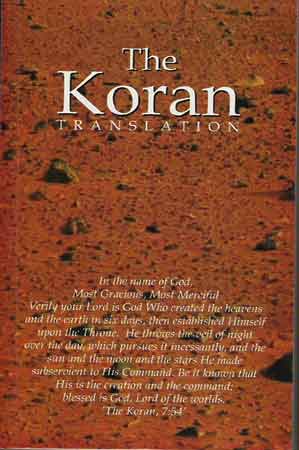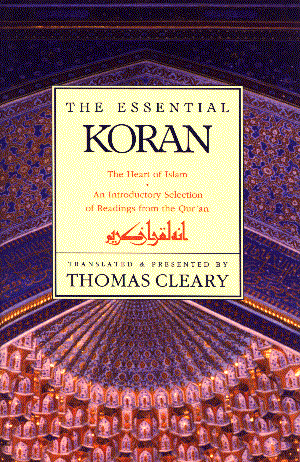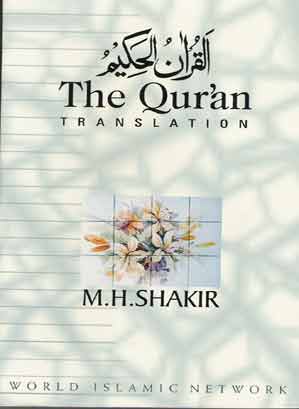Meraj Of Prophet Muhammad
"The experience of the Meraj, like the rising kundalini that Abdula had seen, would not only revolutionise Mohammed's awareness but send out shock waves which resonated in the unconscious of all Arabians and later, all the world.”


surah 97:1-5 Al-Qadr (Night of Power)
1. We have indeed revealed this (Message) in the Night of Power:2. And what will explain to thee what the night of power is?
3. The Night of Power is better than a thousand months.
4. Therein come down the angels and the Spirit by Allah's permission, on every errand:
5. Peace!...This until the rise of morn!
surah 97:1-5 Al-Qadr (Night of Power)
Abdullah Yusuf Ali, The Holy Qur'n, Amana Corporation, 1989.
Meraj Of Prophet Muhammad
"There are a number of legends about the early life of Mohammed, founder of the religion of Islam.
It is said that just before Mohammed's birth his father, Abdula, dreamt of his unborn son. He saw growing from his child's back a tree, which climbed upward, and reaching its full height emitted a light that spread around the world.
Most Muslims interpret the dream and its imagery symbolically. The tree would of course represent the religion of Islam, supported by Mohammed. The light is the wisdom of his teachings that have truly been globally disseminated.
However we also know that the tree in Mohammed's back could be the 'tree of life' and is a common symbol in Middle Eastern and Islamic culture. Carl Jung, after years of studying the language of the unconscious, interpreted the tree of life as one of the universal unconscious's synonyms for the Kundalini.
The Kundalini, said Jung, is a spiritual energy best documented by (but by no means exclusive to) the yogis of India. It should not at all be surprising, should we take an open-minded and closer look at Islam, that as with the other great religions, we find a deeper, more mystical and universal message: that of self realisation and the mechanism by which it occurs — Kundalini awakening. Every culture and religion has had individuals who have achieved a living, spontaneous, direct experience of their religion. A dynamic, suprahuman awareness that went beyond dogma and blind faith. The Gnostics of Christianity, the Yogis of Hinduism, the Fang-Shi of Tao and the Sufis of Islam all achieved these states and each have spoken of experiences that, despite differences of appearance, are strikingly similar in content.
Let us then look at Abdula's dream from a yogic perspective. We can suggest that he actually saw the uniquely powerful Kundalini of his son. The ascent of Mohammed's Kundalini was not simply of individual importance to Mohammed but had global, even cosmic significance. For the light, the divine energy of Mohammed's Kundalini, was about to affect a spiritual and cultural revolution in Arabia. Mohammed was the vessel through which the universal unconscious, or 'divine', or 'God' was about to act.
As a child and young man Mohammed showed few signs of his prophetic destiny. He was well known for his moral integrity and good character but it was not until his forties that he became aware of his true purpose. Through a series of transformative experiences Mohammed was prepared for his divine role. These experiences culminated in the amazing Meraj (or 'Ascent').
The experience of the Meraj, like the rising kundalini that Abdula had seen, would not only revolutionise Mohammed's awareness but send out shock waves which resonated in the unconscious of all Arabians and later, all the world.
Through the Meraj Mohammed realized the need for the establishment of a new culture. He was to establish a creed that went beyond the petty tribal boundaries, blood feuds and violent practices prevalent at the time. To go beyond such ingrained behaviour patterns Mohammed drew upon an awareness of superhuman proportions. He transcended the limitations of the human mind and tapped into the universal intelligence. His vision then became universal: to unite the peoples of Arabia under a system of morality, justice and compassion. A system that would serve as the foundation for one of the greatest civilisations in recorded history.
The Meraj gave Mohammed the confidence, wisdom and superhuman energy to attempt such a revolution.
In this visionary experience the angel Gabriel escorted Mohammed from his humble quarters to the Dome of the Rock in Jerusalem. There the Buraq, a fantastic steed with the body of a horse, the head of a woman and the wings of a bird, greeted him. She shone with dazzling white brightness and her tremendous strength bore Mohammed up into the cosmos through the various divine dimensions.
Gabriel escorted Mohammed on the Buraq through the seven heavens. Each heaven had its own guardian angel and resident prophet who ruled the dimension in accordance with God's laws. Mohammed bowed to guardian angels who determined his readiness to enter into their heaven, and then Mohammed respectfully paid homage to the reigning prophet. The prophet in turn blessed Mohammed and ushered him on to the next heaven and so on.
At the sixth heaven Gabriel brought Mohammed to the verge of the seventh. The archangel said that he himself could go no further. This, the seventh heaven, was the last frontier between god and man and Mohammed was ushered into the place described as the abode of God almighty.
Their Mohammed saw a beautiful, radiant tree with wondrous multicolored leaves. It was here that he communed with God and learned of his true purpose.
This beautiful and inspiring vision has motivated millions of Muslims for more than a thousand years. Its significance becomes even more universal when we examine it from the perspective of kundalini awakening, using the symbolic language of the universal unconscious.
The seven heavens through which Mohammed passed must of course correspond to the seven chakras that exist within the human body. Each chakra, say the yogis, is the abode of a special deity whose character embodies the chakra's innate spiritual qualities. The human chakra system is a microcosm for the entire Eastern pantheon of gods, goddesses and heavenly beings. The prophets and angels that Mohammed encountered in each heaven could well have been these same inner deities that the yogis personally discovered through intense meditation.
The seventh heaven or chakra is the 'Crown Chakra' also termed Sahasrara. Yogis have described it as the most important of all the chakras for it represents the ultimate level of mystic awareness.
Like all the chakras it has a specific number of petals (in this case more than a thousand)|. Each chakra not only has a specific number of petals but also a specific radiant colour. The sahasrara's appearance however is said to contain all the colours of the rainbow for it contains within it all the aspects (and hence the colours) of the six other chakras below it.
Such ancient yogic descriptions of the sahasrara could logically correspond to the resplendent and multicoloured sidrat which Mohammed encountered in the 7th heaven.
The kundalini is a feminine energy often described as an 'inner goddess' or 'mother energy'. Her ascent from the sacrum, through the chakras located in the spinal cord, is the process of self-realisation. When the kundalini arrives in the crown chakra (sahasrara) the seeker experiences the complete transformation of awareness. One is taken beyond the limits of the human mind into the mystical states of meditation described by sufis and yogis alike.
In fact C.G. Jung described the kundalini as the 'divine feminine 'or 'God The Mother'. Notably, Mohammed's vehicle for his own ascent through the heavenly dimensions was the lady-faced, dazzling buraq. The buraq could well be a feminine, Arabic synonym for kundalini.
In conclusion Mohammed's ascent through the seven heavens was, in fact, the ascent of the kundalini, taking his consciousness with it, to divine union with the god almighty.
It is no coincidence that the entire Meraj is described to have started and finished in an incredibly short period of time: While sitting in his room Mohammad heard someone grasp the door handle and the sound of the latch clicking was the last thing he heard before Gabriel's appearance and the duo's departure on their spiritual journey. Mohammed's return to mundane experience restarts with the next few clicks of the same latch movement. In other words the entire experience occurred in a sort of 'no-time'. This is not an unusual proposition since meditation is a state of awareness created by the ascent of the kundalini through the chakras. As it pierces the sixth chakra ('third eye' or Agnya) and seventh, it takes the meditator into the state of 'thoughtless awareness' (Nirvichara Samadhi) and beyond. This is a simple state where one experiences true mental silence, beyond the normal mental awareness of past/future, cause/effect.
The mind, as this editorial column has often discussed before, can only deal with the dimension of past and future, cause and effect, thought and memory. However, the state of meditation begins in the 'spaces between the thoughts'. This is the numinous dimension where there is no passage of time but only a singular, silent, eternal, thought-free and joyful experience.
It was from this dimension of awareness that Mohammed perceived the divine vision of a universal culture and spirituality. Through his meditative vision he learned of humanity's higher potential thus his mystic perception of the universal spirit and its presence within each of us became the template upon which he sought to fashion a new society whose foundations lay not in issues of common material interest but in the unique awareness of Self-Realization. Mohammed was, in fact, laying the first building blocks for the emergence of a spiritual civilization that may only now come into fruition.”[1]
Prophet Muhammad was at all times besides His wife when He experienced this mystical journey (Meraj) to heaven. Kash made about 1300 such journeys to heaven. Prophet Muhammad made the journey within. Kash also made these journeys within. Both reached the mystical heaven within, the Sahasrara or Kingdom of God.
However, in no way is Kash compared or elevated to Prophet Muhammad. Far from it. But there is a reason he met Prophet Muhammad, a reason absolutely necessary to confirm what the Qur'n reveals about His Ruh (Spirit) and the announcement of Al-Qiyamah. These exacting pre-ordained conditions beyond human manipulation form the phalanx of Sure Signs that commences Al-Qiyamah.
“Experience of the universal
The nature of the goal, however, introduces a paradox. Like every other aim and activity, mysticism operates in a historical context. Yet, sooner or later, it also tends to reveal a timeless stance. The mystic is both in and out of time. The eternal now is a kind of release from the temporal order. Such a release may lead to a shift from the local to the universal, to a growing sense of unity of all experience. Though not a declared or conscious aim, this result could be looked upon as a not unworthy goal as well as a pragmatic standard.
To cure man of a provincialism of the spirit, from which more people suffer than either know or admit it, is one of the goals of a mysticism that has come of age. The true mystic is a cosmopolitan. In man's many-sided growth toward the real, a sane and mature mysticism leads to an ecumenical insight and obligation. Local colour, particulars, and uniqueness will not cease, but, in the perspective of the future and of wholeness, the universal alone will have survival value.”
Britannica Online
(1994-1998 Encyclopaedia Britannica, Inc.)
“He was one of those happy few who have attained the supreme joy of making one great truth their very life spring. He was the messenger of One God, and never to his life's end did he forget who he was or the message which was the marrow of his being. He brought his tidings to his people with a grand dignity sprung from the consciousness of his high office, together with a most sweet humility.”
Stanley Lane-Poole, Studies in a Mosque
“Experience of oneness with people
The apotheosized (divinized) field of consciousness is mysticism's ultimate goal and gift to the life of an evolving humanity. It alone is fitted to mediate between the anguish of existence and the serenity of essence, between samsara ("cycle of birth and rebirth") and Nirvana (the State of Bliss). According to an American Roman Catholic mystic, Thomas Merton," The spiritual anguish of man has no cure but mysticism.”
Though the mystic goal may seem to be tied to a transcendent reality, this does not mean a sundering of all relations and responsibilities. On the contrary, it is the guarantee of a set of altered relationships and a rehabilitation of what may be called the higher reason. Intuitions that sink into private fancy and morbidity have a short life to live. As for the mystic's"yonder," it is not spatially or posthumously remote but rather refers to a different order of reality and consciousness. The healthier forms of mysticism do not abjure action or the claims of love. It is an ancient maxim that one becomes what one loves. This is how the psychic birth repeats itself in the mystic soul, as stated, for example, by Meister Eckehart, a medieval German mystic: "It is more worthy of God that he should be born spiritually of every virgin, or of every good soul, than that he should have been born physically of Mary.”
The mystic is not always amorous of the beyond, leaving an unredeemed world to its own ways. Not escape but, rather, victory is mysticism's inner urge and promise. The more sober among the mystics do not merely withdraw; they also return to the base and attempt the ancient alchemy, the transformation of men. A solitary salvation does not satisfy either head or heart.”
Britannica Online, (1994-1998 Encyclopaedia Britannica, Inc.)
“My problem to write this monograph is easier, because we are not generally fed now on that (distorted) kind of history and much time need not be spent on pointing out our misrepresentations of Islam. The theory of Islam and sword, for instance, is not heard now in any quarter worth the name. The principle of Islam that "There is no compulsion in religion" is well known.”
K. S. Ramakrishna Rao, Mohammed: The Prophet of Islam
'Mystical relationship between man and the sacred
Nature of the relationship
within man is the soul of the holy, said Ralph Waldo Emerson in the 19th century. This is true of society, too. As the French sociologist émile Durkheim saw it, the sacred is but a personified society. Mysticism, one might say, is the art and science of the holy. Theologically, it is but "The experience of the Holy Ghost, ... the realization of the Spirit of Holiness.” As the opposite of the profane and as a distinct and irreducible quality of the religious and mystical life, the sacred has always existed. It is indeed a mark of the real, and, when the German theologian Rudolf Otto isolated the sacred as a "quite distinctive category" of mystical apprehension, he had no lack of evidence. The emphasis, however, was not unanimously accepted. Some, like Inge, thought the sacred might as well be elicited from such ultimate values as "truth, goodness, and beauty.”
According to the respective world view, the interpretation or emphasis varies, but the universal core remains unaffected. The sacred is in its own way a coherent system, though not rational. The dualists no less than the theists insist on the unqualified and irreducible "otherness," the unbridgeable gulf, even when one speaks of union or communion. It is the distance that preserves the sacred.
Christian mystics, who often speak of "union with God," generally do not imply identity with the divine, since this might lead to heresy. The 16th-century Spanish mystic St. Teresa of Avila could write with impunity: "It is plain enough what unity is — two distinct things becoming one.” But most others could not be so plain and had to use special strategy to cover up traces of possible deviation from what was permissible. Even if there had been a semblance of interpenetration between man and the divine, there could be no substantial identity. "Each of these," wrote the medieval Dutch mystic Jan van Ruysbroeck, "keeps its own nature. There is here a great distinction, for the creature never becomes God, nor does God ever become the creature.” The same doctrine is preached in the Middle Ages by the mystic Heinrich Suso:
In this merging of itself in God the spirit passes away and yet not wholly; for it receives indeed some attribute of God, but it does not become God by nature. It is still something that has been created out of nothing, and continues to be this everlastingly.'
Britannica Online, (1994-1998 Encyclopaedia Britannica, Inc.)
Notes
1. Knowledge of Reality, Yogic Insights into Islam (Issue 15)
Disclaimer: Our material may be copied, printed and distributed by referring to this site. This site also contains copyrighted material the use of which has not always been specifically authorized by the copyright owner. We are making such material available to our readers under the education and research provisions of "fair use" in an effort to advance freedom of inquiry for a better understanding of religious, spiritual and inter-faith issues. The material on this site is distributed without profit. If you wish to use copyrighted material for purposes other than "fair use" you must request permission from the copyright owner.